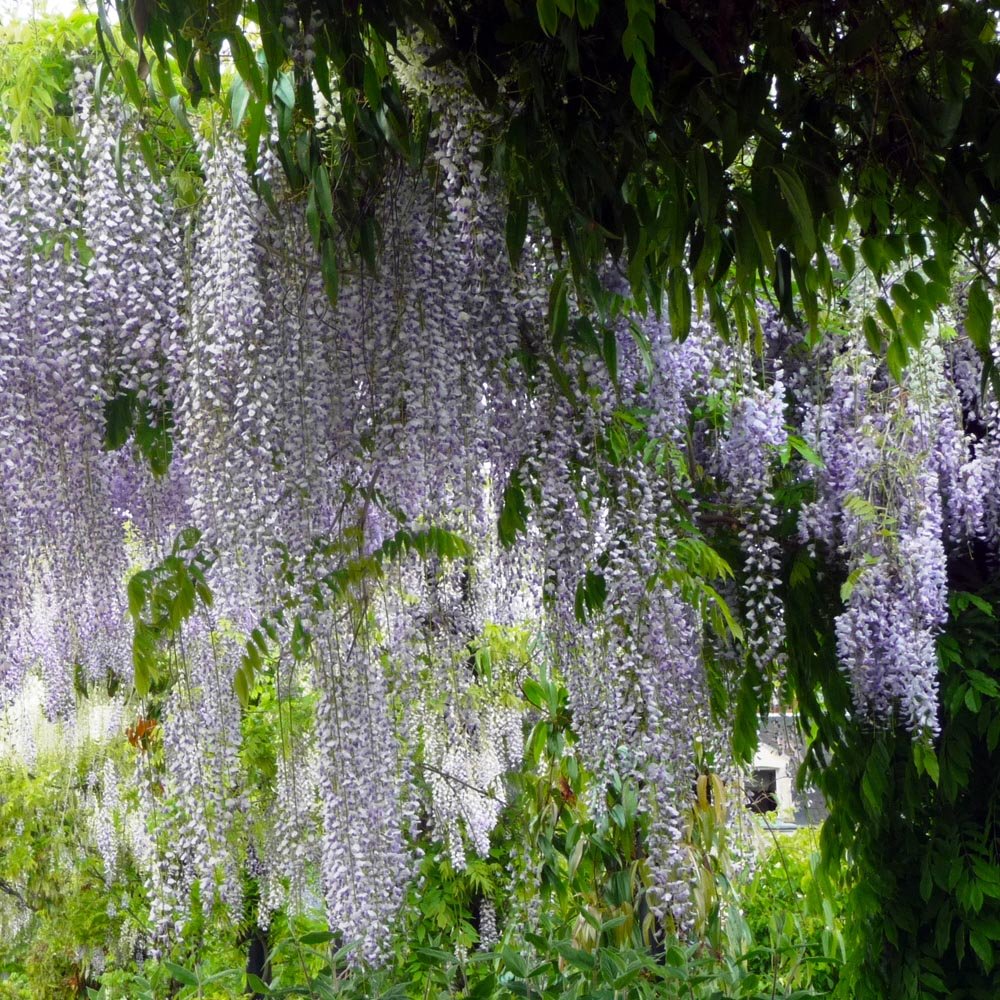
Wisteria floribunda Macrobotrys Lilac Climbing Wisteria Trees
'Macrobotrys' Red-violet, fragrant flowers on 2-4' racemes.
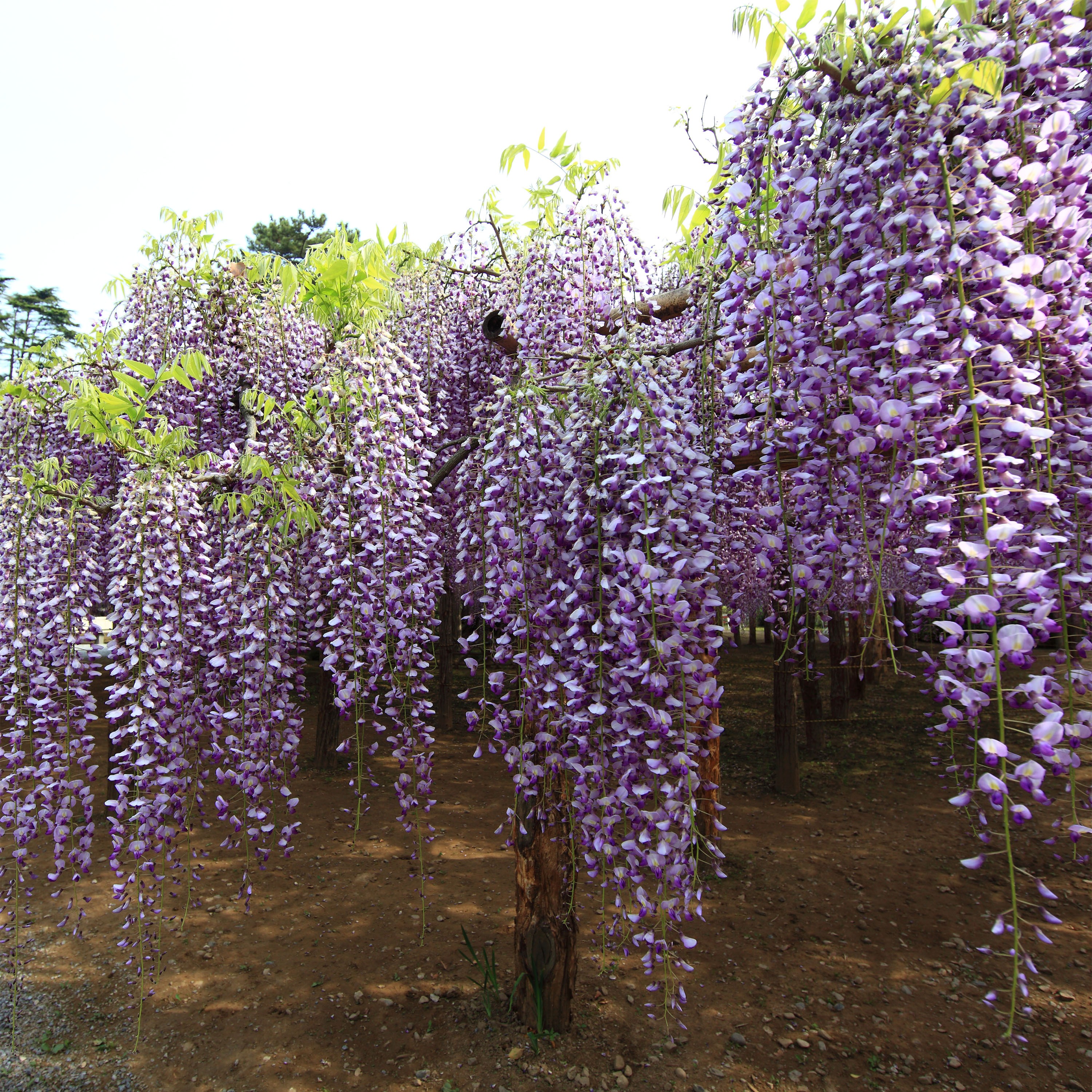
Wisteria floribunda Macrobotrys Glycine du Japon à longues grappes
Wisteria floribunda 'Macrobotrys'. This variety is a true miracle of nature for the amazing length of its clustered bunches. It has even managed to get its name in the Guinness book of records, one plant is noted to have grown to180 cm in length. It looks perfect on vine-trellises and pergolas where the flowers can dangle freely.

Wisteria floribunda 'Macrobotrys' tree in bloom at Exbury Gardens Hampshire, UK Stock Photo Alamy
Wisteria. Wisteria is a popular ornamental plant that never fails to produce a dramatic floral display. The plant belongs to the pea family (Fabaceae) and is native to Asia, particularly China, Korea, and Japan. Plant: Wisteria is a woody, deciduous vine that can grow up to 30 feet (9 meters) long and spread up to 8-10 feet (2.4-3 meters) wide.

Wisteria floribunda 'Macrobotrys' (closeup) 2015 Grows on You
Wisteria sinensis (Chinese Wisteria) and Wisteria floribunda (Japanese Wisteria) have far outstripped the others in popularity, at least in northern gardens, because of their profuse blooms, large flower clusters, their color variety, and fragrance. Wisteria sinensis - Chinese Wisteria. Vigorous climber, twining anticlockwise.
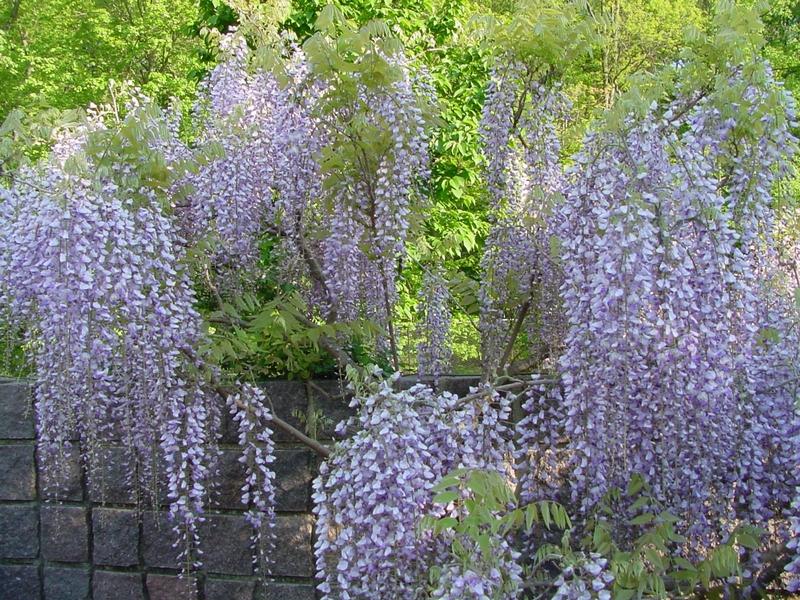
WisteriafloribundaMacrobotrys.jpg
Wisteria floribunda, commonly called Japanese wisteria, is a woody, clockwise-twining, deciduous vine which typically grows 10-25' (sometimes larger). Can also be trained as a multi-stemmed shrub or small tree.. It is synonymous with 'Macrobotrys'. Problems. Though susceptible to a number of foliage-chewing insects and fungal diseases, none.
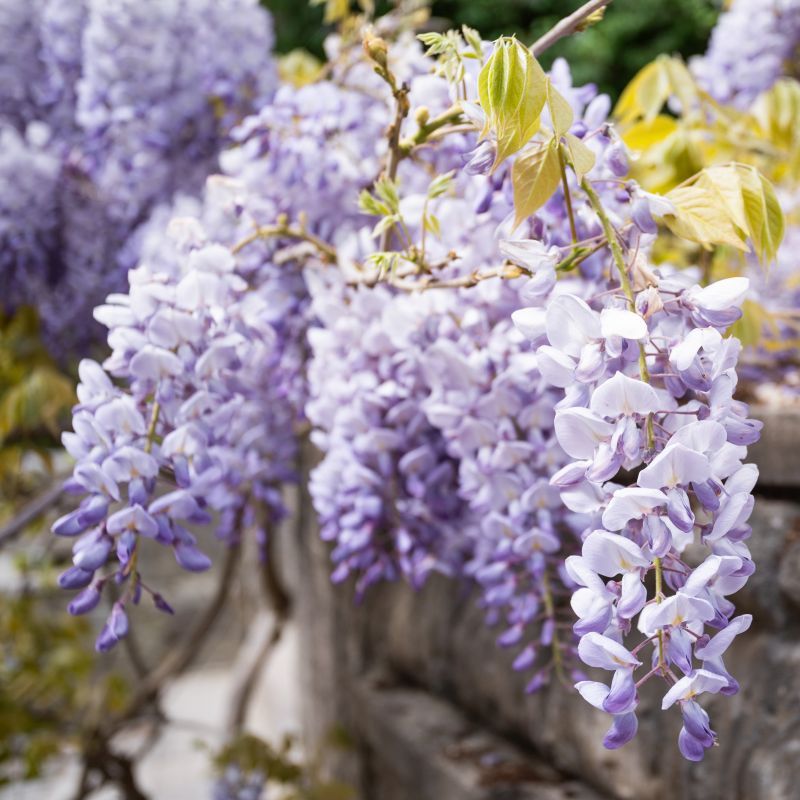
Wisteria floribunda 'Macrobotrys' 3L Coolings Garden Centre
To 9m (28ft) Spread. 5m (15ft) Climber. Some of these climbing plants will need trellis or wire supports if grown on walls or fences. Other grow aerial roots and are self-clinging. Vigorous twining climber. Produces pea-like flowers in pendent racemes 0.9-1.2m (3-4ft) long. Hardy - cold winter.
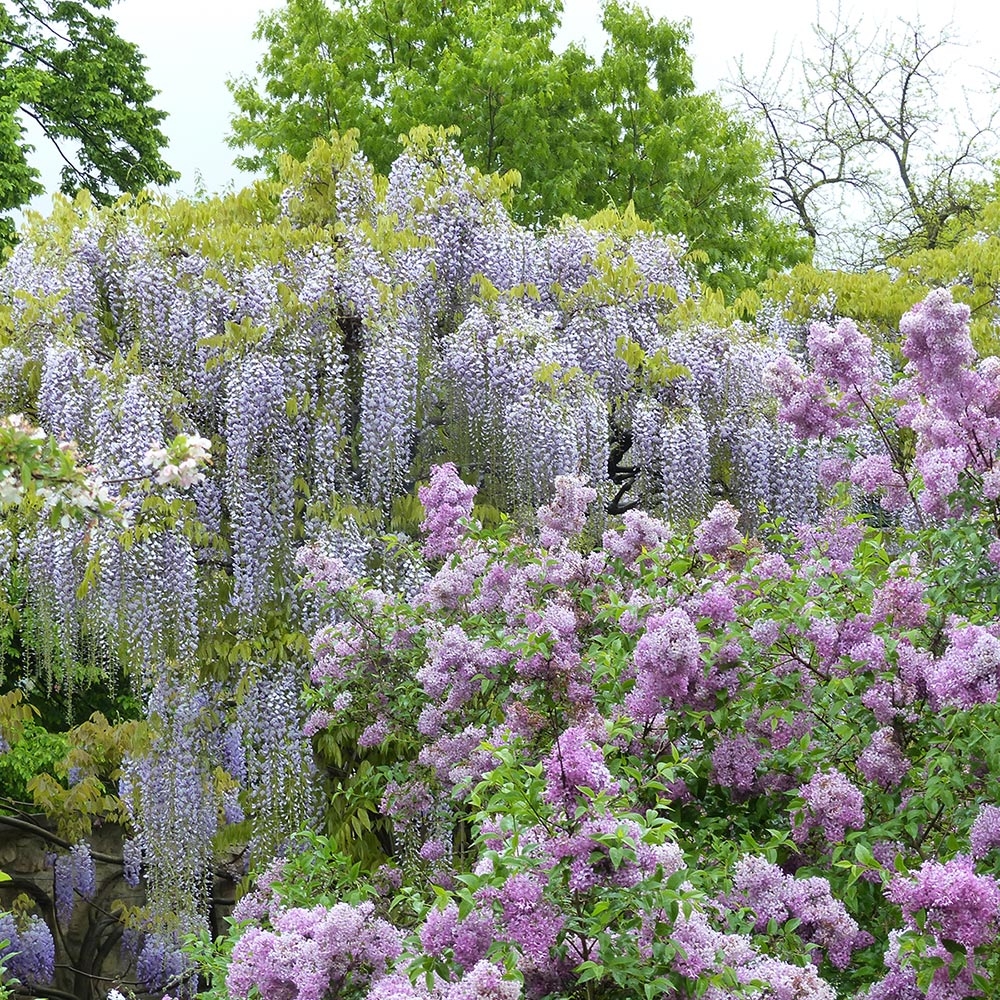
Wisteria floribunda Macrobotrys De Belder Glycine japonaise à très longues grappes
Noted for its excellent fragrance and voluptuous floral display, award-winning Wisteria floribunda 'Macrobotrys' or 'Multijuga' (Japanese Wisteria) produces masses of extraordinarily long hanging clusters, up to 40 in. long (100 cm), packed with pea-like, lilac flowers with dark violet markings.

Wisteria floribunda Macrobotrys (syn. Longissima, Multijuga, Naga Noda) Wisteria vistárie
Wisteria floribunda ( Macrobotrys Wisteria ) 'Macrobotrys', also known as 'Kyushaku', 'Multijuga', and 'Naga Noda', has large, 3 to 4 foot long racemes with lilac-blue flowers. This is a popular, aggressive, flowering vine bearing pinnate leaves with up to 19 lance-shaped leaflets, each up to 3 inches long.

Wisteria floribunda Macrobotrys (syn. Longissima, Multijuga, Naga Noda) Wisteria vistárie
Wisteria floribunda 'Macrobotrys' is a broadleaf deciduous vine with green foliage and purple flowers in spring and summer. It can grow 20 FT - 30 FT - wide, 20 FT - 30 FT - tall. Attractive to butterflies. Deer resistant. To grow well, it prefers sun - shade and even moisture water. Grows best in well-drained and rich soil. #support Plant family: #Fabaceae USDA Zone: zone 5a - 9b

Wisteria floribunda 'Macrobotrys', Edelblauregen 'Macrobotrys'
Wisteria macrobotrys. Macrobotrys Japanese Wisteria is a wonderful cultivar and is a recipient of the prestigious Royal Horticultural Society Award Of Merit as an outstanding garden plant. Nothing signals the start of Spring more than the sweet smell and beautiful cascading flowers of Wisterias.
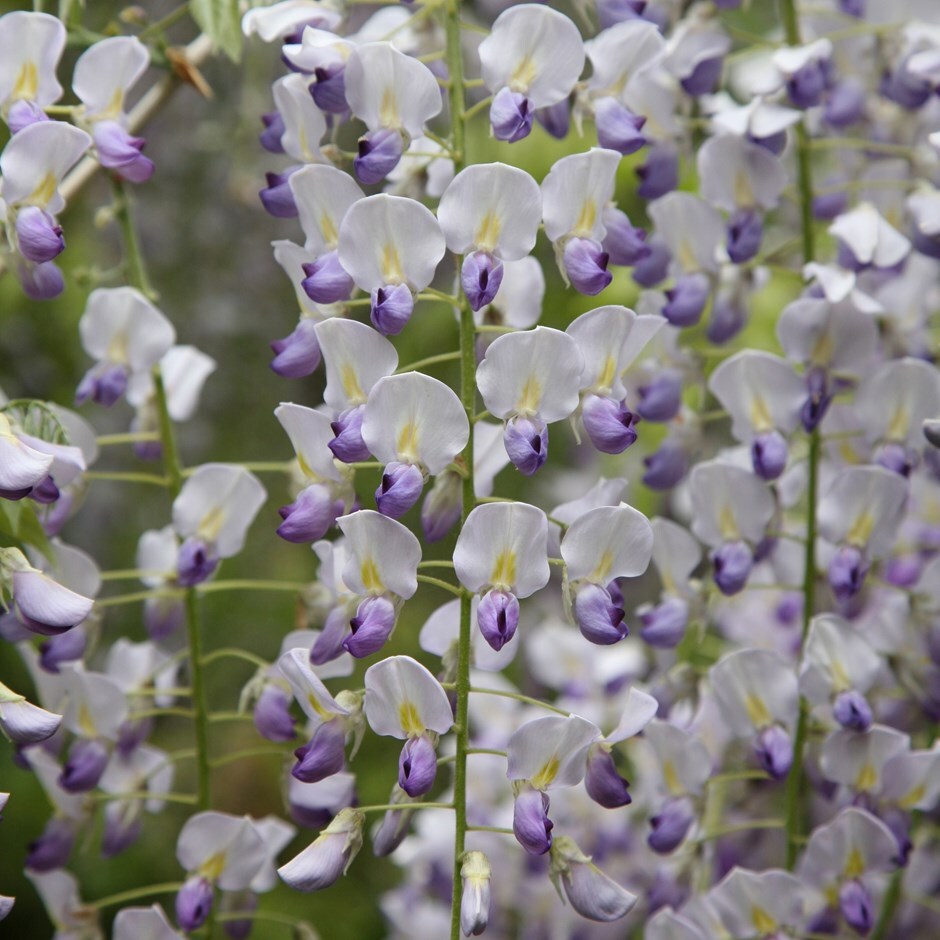
Buy Japanese wisteria ( syn. Wisteria Macrobotrys ) Wisteria floribunda f. 'multijuga'
Wisteria floribunda 'Macrobotrys' Write a review Price: $79.75 Size: 3-year graft (4 feet) Add to Cart Add to wish list Description Growth Habit: vigorous vine USDA Zone: 5-9 Exposure: filtered to full sun Flower Color: purple/mauve/white Flower Type: 24-36 inch racemes Growing Conditions: humus-rich, moist, well-drained soil

Wisteria floribunda 'Macrobotrys' Japanese Wisteria On a 90cm Cane Roots Plants
Delivery options. Standard £5.95. Named Day £10.95. This climber is deciduous so it will lose all its leaves in autumn, then fresh new foliage appears again each spring. Position: full sun or light, dappled shade. Soil: fertile, moist, well-drained soil. Rate of growth: fast-growing. Flowering period: May to June.

PlantFiles Pictures Japanese Wisteria 'Longissima (aka Macrobotrys)' (Wisteria floribunda), 1
'Macrobotrys Cascade' - white and pinkish-purple flowers, vigorous grower 'Nana Richins Purple' - purple flowers 'Nishiki' - variegated foliage 'Plena' or 'Violaceae Plena' - double blue flowers in dense clusters 'Praecox' or 'Domino' - purple flowers 'Purpurea' - unknown; may be Wisteria sinensis 'Consequa', sometimes labeled purpurea

Wisteria floribunda 'Macrobotrys'
Shop Japanese Wisteria | Wisteria floribunda 'Macrobotrys' from £30.00. Browse the rest of our expertly chosen selection of UK grown Climbing Plants. Lavender purple flowers on racemes up to 1m long Flowers from May to June Vigorous climber perfect for a feature wall Luscious green foliage turning golden in Autumn Woody vines add natural.
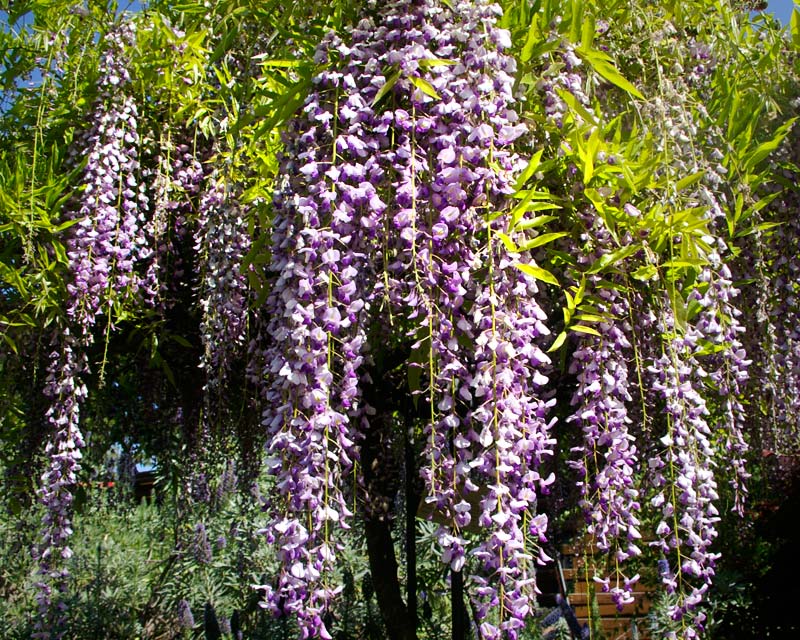
Wisteria floribunda
The Wisteria Floribunda is commonly named Japanese wisteria as it is native to Japan. It is hardy to about -4°F (-20°C) and grows well in USDA zones 4 to 9 and UK/Europe zones H6. Wisteria Floribunda is a part of the Fabaceae family (legumes, beans and pea plant family). In the garden can best be used as a fence, bordering the edge of the.
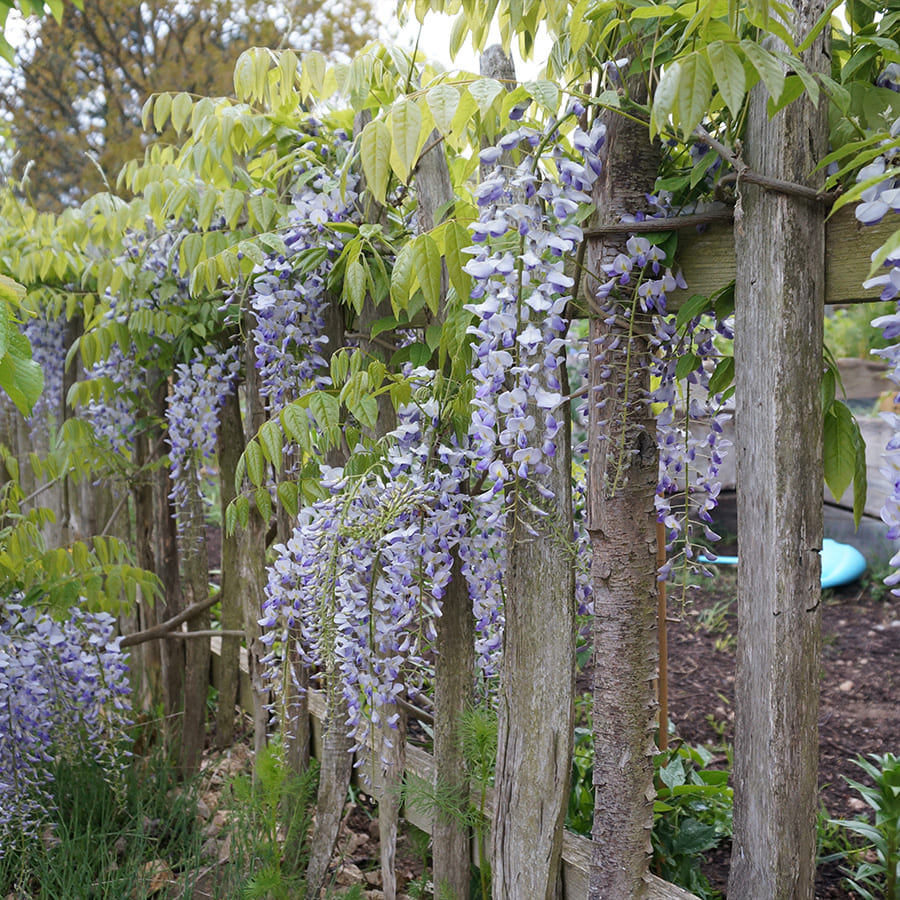
Wisteria floribunda 'Macrobotrys' / Glycine japonaise Arboreus
Wisteria floribunda Macrobotrys Group. Valder's wisteria. Named for Australian wisteria plantsman, Peter Valder, a hybrid between the twining, deciduous climbers W. brachybotrys and W. floribunda, about 8-9m tall, with the long flower racemes of W. floribunda and the broad, large flowers, hairy stems and leaves of W. brachybotrys..